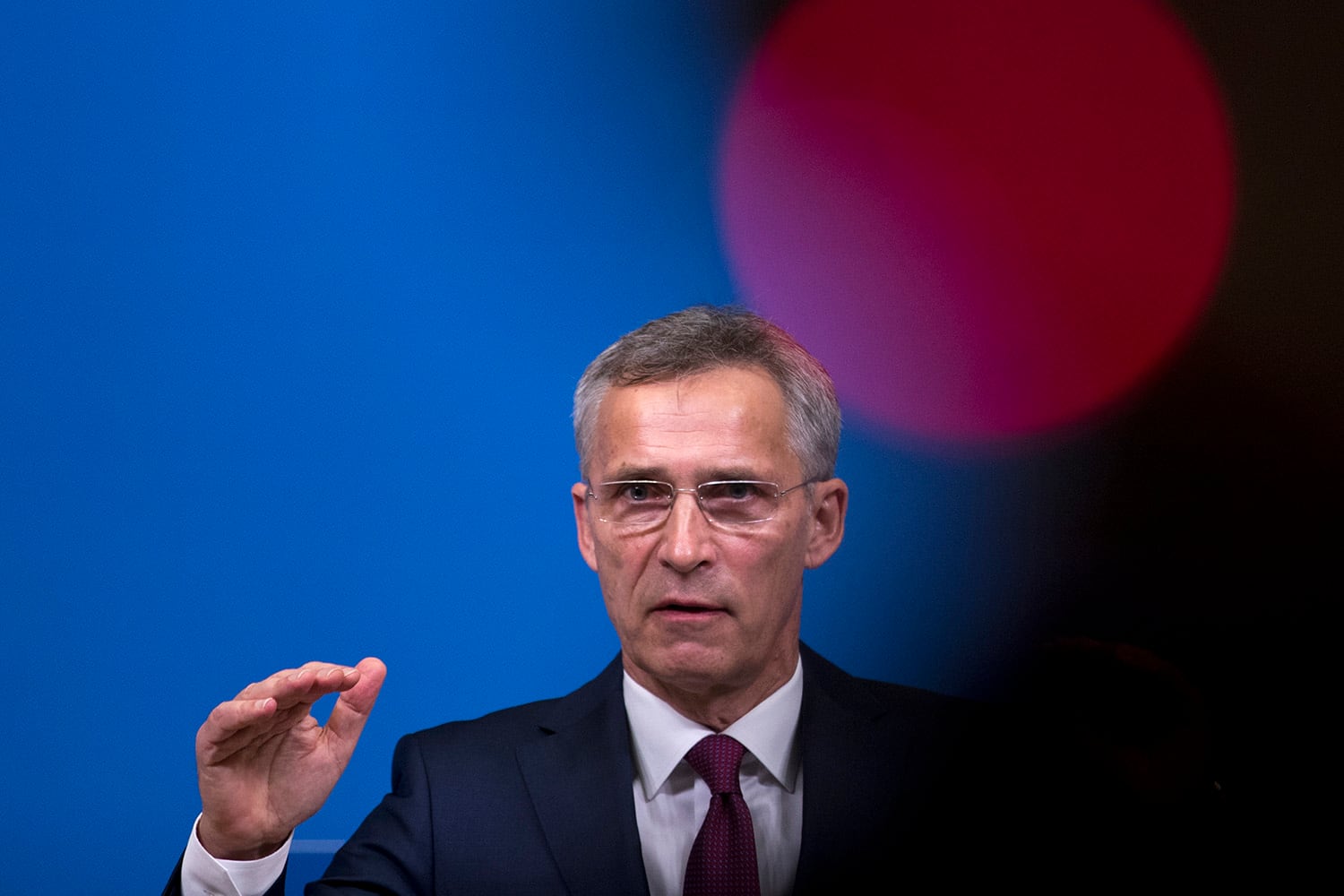On Nov. 11 this year, people across the globe stopped in silent contemplation to remember those who died in World War I. The extraordinary human and economic cost of the world wars in the first half of the 20th century led the free nations of Europe and North America to seek a different path — a path based on collective defense. They embodied this new approach in the North Atlantic Treaty Organization, the NATO alliance.
Next year will mark 70 years in which NATO has kept the peace in Europe.
NATO’s original purpose was as a defensive shield against the Soviet Union. The Cold War is over, but significant challenges remain.
In recent years, we have witnessed an increasingly dangerous and unacceptable pattern of behavior from Russia: its military buildup and aggressive actions from the north of Europe to the Middle East, including a new intermediate-range missile, which calls into question its commitment to a key arms control treaty; its use of hybrid tactics including cyberattacks, disinformation and interference with the democratic processes of other countries; and its use of a deadly nerve agent in the United Kingdom, a first on NATO soil.
It also continues to undermine Ukraine’s sovereignty and territorial integrity with a conflict in the east of the country that has already cost more than 10,000 lives.
Unfortunately, there is no indication that Russia intends to change its behavior. Until it does, NATO will maintain its dual-track approach: strong deterrence and defense combined with our pursuit of meaningful dialogue.
At our summit in July, NATO leaders took the decisions needed to strengthen our deterrence and defense. They agreed a new readiness initiative, the Four Thirties — 30 mechanized battalions, 30 air squadrons and 30 combat vessels, ready to use within 30 days or less.
We are updating our command structure with a new command for the Atlantic and a new command for support and logistics. Both will help our forces become more mobile, ensuring we have the right forces in the right places at the right time, and at a higher state of readiness.
In response to Russia’s campaign of cyberattacks, we are ensuring that we are as strong in cyberspace as we are on land, at sea and in the air. Several allies have now offered their cyber capabilities to NATO, and allies work closely together to thwart cyberattacks.
NATO is a purely defensive alliance. Along with strong deterrence and defense, we remain open to dialogue with Russia. While we suspended all practical cooperation following Russia’s illegal annexation of Crimea in 2014, the NATO-Russia Council still meets to discuss issues such as the situation in Ukraine, transparency and risk reduction, and military activities.
RELATED

But Russia is not the only challenge we face. The threat of international terrorism remains. After the 9/11 terrorist attacks on the United States, NATO invoked our collective defense clause, Article 5, for the first and only time. This led to NATO’s largest operation in Afghanistan, where we remain to continue our support for peace and democracy.
We have since seen the rise of ISIS, or Daesh, in Iraq and Syria; and while it may be weakened, it still poses a threat. To help prevent ISIS from returning, we have launched a new training mission in Iraq to establish professional military schools for the Iraqi forces, employing the lessons we have learned from Afghanistan. We are also increasing our support for Jordan and Tunisia to further strengthen their ability to combat terrorism. And we stand ready to support Libya.
Increasing our response to a more challenging security environment does not come for free, and allies continue to spend more on defense. This year will be the fourth consecutive year of rising defense spending. In 2018, European allies and Canada boosted their combined budgets by over 5 percent of gross domestic product, the biggest increase in real terms in a quarter of a century. Over the past two years, that means a cumulative $41 billion more spent on defense.
There is still a long way to go, but we are headed in the right direction, with every nation now committed to increasing their defense spending and to developing credible national plans on how they will get to 2 percent of GDP. This is also about our credibility.
By standing together, NATO allies have ensured the security of the trans-Atlantic area for seven decades. Today we face a range of complex and diverse challenges, but by continuing to stand together, by taking the decisions necessary to strengthen our defense and by investing more in our own security, NATO will continue to keep us safe for many decades to come.
Jens Stoltenberg is the secretary general of NATO.







